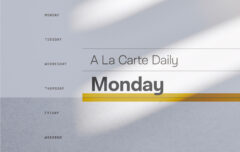I love church history. I consider it absolutely tragic that so few contemporary Christians have any real sense of their heritage. They know a little bit of New Testament history, can list hundreds of today’s best and worst teachers, but know almost nothing of the 2000 years between.
The Reformation: How a Monk and a Mallet Changed the World is one of a long line of books authored by Stephen Nichols, professor at Lancaster Bible College in Lancaster, Pennsylvania. Nichols is a prolific author who seems to be releasing books with impressive regularity. To this point all of his books have centered on church history. He has written several works on Jonathan Edwards, one each on Martin Luther and Gresham Machen, and one providing a guided tour of classic Christian writing. This new title “goes behind the scenes and uncovers the human side of the larger-than-life Reformers through user-friendly narrative stories on the Reformation.”
The book is built upon two ideas, both of which I agree with entirely. The first is that the Reformation matters (which indicates that all of church history matters). Nicholas provides four reasons why: first, church history provides lots of examples of Christians from all walks of life who labored to bring their faith to bear upon the world in which they lived; second, church history can be humbling as we realize that we are not a whole lot better and smarter and godlier than people in the past; third, we are humbled by the spiritual insight and spiritual depth of our predecessors in the faith; fourth, we learn what matters most to the Christian faith when we look to church history in general the the Reformation in particular. The second idea behind this book is simply that history can be fun. Though teachers of history can take the fun out of it, this does not indicate that history is just plain boring. When taught well, history is a joy and can bring about many benefits.
The Reformation: How a Monk and a Mallet Changed the World serves as a brief and popular introduction to the Reformation, and in particular, to the key figures in each of the nations involved. We first meet Martin Luther and learn about the Reformation in Germany where it began. From there we move to Ulrich Zwingli and Switzerland and then to the Anabaptists. From there we go to John Calvin, Thomas Cramner and other English Reformers, and then we meet the Puritans. The final chapter introduces many of the women of the Reformation, both those notable for being the wives of the Reformers and those who made substantive contributions on their own. A few appendices introduce Reformation-era creeds, prayers, and other writings. One section I appreciated was one dealing with the question of “Do we still need the Reformation?” Answering historians like Mark Noll who argue that the Reformation is over and that unity between Protestants and Catholics can now be achieved, Nichols affirms that the theology at the heart of the Reformation was the very gospel and that we are not at a place where we can have ecumenical unity.
All-in-all, this book serves as a wonderful, popular-level introduction to the key persons and events involved in the Reformation, surely one of history’s most pivotal times. It makes for a great springboard to deeper appreciation and thus deeper study of both people and events. It is exactly the kind of book I would put in the hands of new Christians, or simply Christians who have no appreciation of the church’s history, so they can benefit from knowing and understanding the history of the church and thus the history of their faith. I wholeheartedly recommend it.










